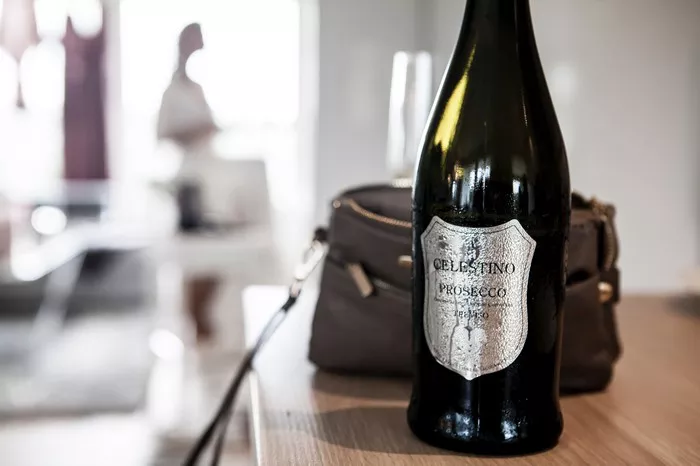The world of sparkling wines often dazzles with its diversity and complexity. Among the various types, the question often arises: is rosé sparkling wine champagne? This query unveils a fascinating exploration into the nuances of winemaking, regional regulations, and the distinctive characteristics that set champagne apart from other sparkling wines, including rosé.
Understanding Champagne and its Unique Identity
Firstly, it’s crucial to comprehend the geographical specificity of Champagne. The term “Champagne” refers not just to a type of sparkling wine but denotes a region in northeastern France. Only sparkling wines produced within this delimited territory, adhering to stringent regulations, can rightfully bear the prestigious label of “Champagne.”
However, the mere presence of bubbles in a pink-hued wine doesn’t automatically classify it as Champagne. Is rosé sparkling wine Champagne? The answer hinges on the specific production methods, grape varieties, and adherence to the stringent guidelines laid down by the Comité Champagne.
The Making of Champagne vs. Rosé Sparkling Wine
Champagne undergoes a unique winemaking process called the traditional method or méthode champenoise. This intricate technique involves a second fermentation that occurs in the bottle, instigating the effervescence characterizing Champagne. The primary grapes used in Champagne production are Chardonnay, Pinot Noir, and Pinot Meunier.
On the other hand, rosé sparkling wine encompasses a broader category that includes various winemaking methods. While some rosé sparkling wines undergo the traditional method similar to Champagne, others might use different approaches, like the Charmat method or the blending of still red and white wines. Grapes like Pinot Noir, Pinot Meunier, and sometimes Grenache or Sangiovese contribute to the distinct pink hue and flavor profile of rosé sparklers.
The Role of Grapes in Crafting Rosé Sparkling Wine and Champagne
In Champagne production, the use of red grapes—Pinot Noir and Pinot Meunier—provides the potential for crafting rosé Champagne. Winemakers meticulously control the skin contact during the maceration process to attain the desired color extraction, ensuring the delicate pink tones characteristic of rosé Champagne.
Conversely, for other sparkling wines, the grape selection might vary based on the winemaking region and style preferences. Some rosé sparklers derive their color from a short period of maceration with the grape skins, while others blend red and white wines to achieve the desired hue and flavor profile.
Terroir: Influence on Champagne and Rosé Sparkling Wine
Terroir, encompassing the environmental factors like soil, climate, and topography, significantly influences the flavors, aromas, and overall character of both Champagne and rosé sparkling wines. The distinct terroir of Champagne contributes to its unique taste profile, marked by chalky soils and a cool climate that imparts elegance and minerality to the wines.
For rosé sparkling wines, terroir plays an equally crucial role. The grape-growing regions and their specific climates, soils, and grape varieties contribute distinct nuances to these wines. From the crispness of Provençal rosés to the boldness of Spanish Cava rosados, terroir shapes the diverse array of rosé sparkling wines available worldwide.
See Also: how much sugar is in sangria
Regulations and Designations: What Sets Champagne Apart
Champagne’s protected designation of origin (PDO) status ensures its exclusivity to the region and stringent adherence to quality standards. The Comité Champagne regulates every aspect, from grape cultivation to winemaking processes, controlling yields and setting guidelines for aging, labeling, and dosage.
Contrarily, while several regions produce outstanding rosé sparkling wines, they lack the strict geographical limitations and regulations governing Champagne. This absence of strict regulations allows for diverse interpretations and styles of rosé sparklers across various winemaking regions globally.
Consumer Perception and Market Trends
The market perception and consumer preferences often play a pivotal role in shaping the distinction between Champagne and rosé sparkling wine. Champagne, long associated with celebrations and luxury, commands a prestigious position in the market, reflected in its higher price points.
Conversely, the versatility, approachability, and diverse range of flavors in rosé sparkling wines have garnered significant attention from consumers seeking vibrant and refreshing alternatives. The growing demand for rosé sparklers has led to an influx of offerings from various winemaking regions, catering to different tastes and preferences.
Pairing and Enjoyment: Exploring Versatility
Both Champagne and rosé sparkling wines offer incredible versatility in food pairings. The acidity, effervescence, and nuanced flavors of Champagne complement a wide array of dishes, from delicate seafood to rich, creamy cheeses, and even fried foods.
Rosé sparkling wines, with their fruit-forward profiles and varying levels of sweetness, pair excellently with diverse cuisines, including spicy dishes, light salads, and desserts. The versatility of rosé sparklers makes them an ideal choice for different occasions, whether casual gatherings or formal affairs.
Conclusion: Appreciating the Distinctiveness
In conclusion, while rosé sparkling wine encompasses a broad category of pink-hued sparklers, Champagne stands as a specific type within this spectrum. The unique winemaking techniques, regional regulations, grape varieties, and terroir contribute to the distinctiveness of Champagne, setting it apart from other rosé sparkling wines produced worldwide.
Understanding the intricacies of Champagne production versus the various methods used in crafting rosé sparklers illuminates the vast diversity and complexity within the world of sparkling wines. Whether enjoying the prestige of Champagne or savoring the myriad flavors of rosé sparkling wines, each offers a unique and delightful experience for wine enthusiasts worldwide.


